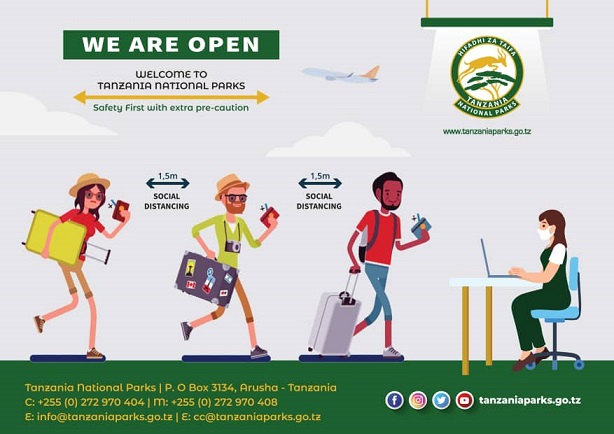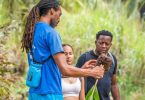Counting the losses from tourism during the COVID-19 pandemic in East Africa, local communities living in wildlife conservation areas and those depending on tourism for their daily livelihood are now facing dangers from starvation and lack of basic humanitarian services due to the Africa tourism decline.
Lockdowns in Europe, the United States, and other key tourist market sources outside Africa are counted to have caused serious economic impacts to African communities whose livelihood depends on tourism directly and the multiplier effect from tourism.
East African states, rich in wildlife resources for global hunting and photographic safaris, are counted among the world tourist destinations which had lost big revenues from tourism since March this year when lockdowns were introduced at global levels.
During their annual budgets submitted before their parliaments on Thursday this ending week, the governments of Tanzania, Kenya, and Uganda spelled out their strategic plans to revive tourism with no concrete plans in place to assist local communities affected by tourism loss.
A total of 21 international airlines cancelled 632 flights to Tanzania since March 20, causing deterioration of tourism and services provided to tourists – mostly transportation of tourists, accommodation, food, beverages, and entertainment.
Tanzania had opened its wildlife parks and airports for tourists but with health precautions to keep COVID-19 at bay.
Tanzanian Minister for Finance, Phillip Mpango, said that some hotels were closed leading to layoffs to employees. Likewise, Tanzania halted international flights leading to revenue losses.
For instance, Tanzania National Parks Authority (TANAPA), Ngorongoro Conservation Area Authority (NCAA), and Tanzania Wildlife Management Authority (TAWA) have been significantly affected by loss of revenues following a sharp decline in tourism due to COVID-19 in the respective countries of origin, the Minister said.
Mitigating the situation, the Minister said that the government of Tanzania will finance expenditures for those wildlife conservation institutions to mitigate COVID-19 pandemic effects.
These institutions will receive subventions from the government’s annual budget to cover their operational costs for employee’s salaries and other charges as well as development expenditure, including the maintenance of roads and other tourism infrastructure from destruction caused by heavy rains.
In Kenya, the government has allocated funds to tourism to help the sector bounce back to profitability owing to the COVID-19 outbreak.
The Kenyan government said it will scale up efforts to boost the tourism sector by promoting aggressive post-COVID-19 tourism marketing and by providing support for hotel refurbishment through soft loans to be channeled towards tourism finance corporations.
The money will be set aside to support the renovation of tourist facilities and the restructuring of business operations by actors in this industry.
The monies will also be shared with the Tourism Promotion Fund and Tourism Fund. Kenyan government has also waived landing and parking fees at the airports in order to facilitate movement in and out of Kenya.
The allocation to the sector tops up to $4.75 million that the government set aside earlier this year to market Kenya’s tourism destinations to ensure Kenya remains a preferred travel destination globally.
In Africa, the COVID-19 pandemic has hit communities that rely on wildlife-based tourism business for their survival in countries like Tanzania, Rwanda, Kenya, and Botswana.
More than 70 million tourists visited Africa last year for photographic safaris, game drives, or trophy hunting.
But with airports and borders now closed in most countries, there are no revenues from tourists to support the local communities after the outbreak of the disease.
But local communities in East Africa, mostly the Maasai pastoralists in both Tanzania and Kenya, are the most affected by the closure of tourism, hence the decline in tourism revenues.
Maasai pastoralist communities in East Africa are mostly living in tourist-rich areas and where the land has been transformed into national parks, conservation areas, game reserves, and hunting blocks.
In both Kenya and Tanzania, big chunks of the Maasai land has been converted into wildlife conservation and protection areas where leading national parks in Kenya and Tanzania are located in Maasai areas.
The Ngorongoro Conservation Area in Northern Tanzania has set a good example in which the Maasai communities are living and sharing natural resources together with wild animals, sharing revenues gains from tourism.
Through tourism revenues, Maasai communities living inside the wildlife conservation area get a share of tourist incomes generated from tourists.
Social service projects have been established then implemented through tourism revenues, targeting to benefit the Maasai communities in education, health, water, livestock extension, and income-generating programs.
After the outbreak of COVID-19 leading to travel restrictions in key tourist markets with no single potential tourists visiting the wildlife parks in the past few months, the Maasai and other communities sharing tourist incomes are now suffering from lacking social services and economic activities.
Outlining the impact that COVID-19 has had on communities, wildlife conservationists said the global focus should be on people or local communities.
The WWF UK’s executive director of science and conservation, Mike Barrett, said it is the right time that the global focus should be on protecting human lives in this devastating pandemic, mostly in places where communities rely heavily on ecotourism for their livelihoods.
With little government funding, the continent’s national parks largely depend on tourism revenue to run their operations and care for the animals and plants that thrive there.
“The lack of funds means parks cannot do frequent patrols, as they need fuel for their cars and they need food for rangers to go on patrol,” said Kaddu Sebunya, chief executive officer of the African Wildlife Foundation.
“There are no tourists and fewer rangers around due to social distancing measures, making it easy for criminal networks to harvest natural resources,” Sebunya said.
He said his biggest worry was for the 20 to 30 million Africans who earn a livelihood directly or indirectly from tourism.
Many are involved in eco-tourism projects from running safari lodges to giving village tours or selling traditional produce and handicrafts to tourists.
Standing as the world’s second-fastest growing tourist destination, Africa had expected the beginning of 2020 to observe a lucrative year, to rake in billions of dollars. But when COVID-19 struck, tourists stopped coming, and the industry ground to a sudden halt.
But now, a dangerous combination of national lockdowns, a tiny local tourism customer base, and an industry aimed at high-paying foreign visitors means Africa’s tourism industry may not adapt quickly enough to avoid collapse.
Developing domestic and regional tourism is the best strategy that would make the African continent a single destination, taking into account the rich tourist attractions within the continent, according to Africa’s travel and tourism industry power players.
Kenyan Minister for Tourism and Wildlife, Mr. Najib Balala, said late last month that domestic and regional tourism was the key and best approach that would bring African tourism to immediate recovery from the COVID-19 pandemic.
#rebuildingtravel























